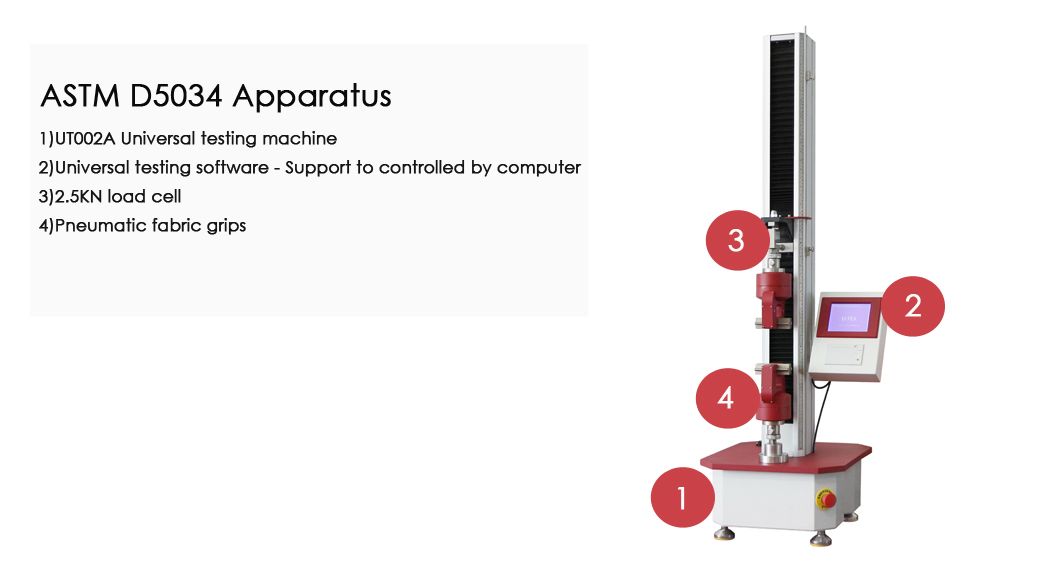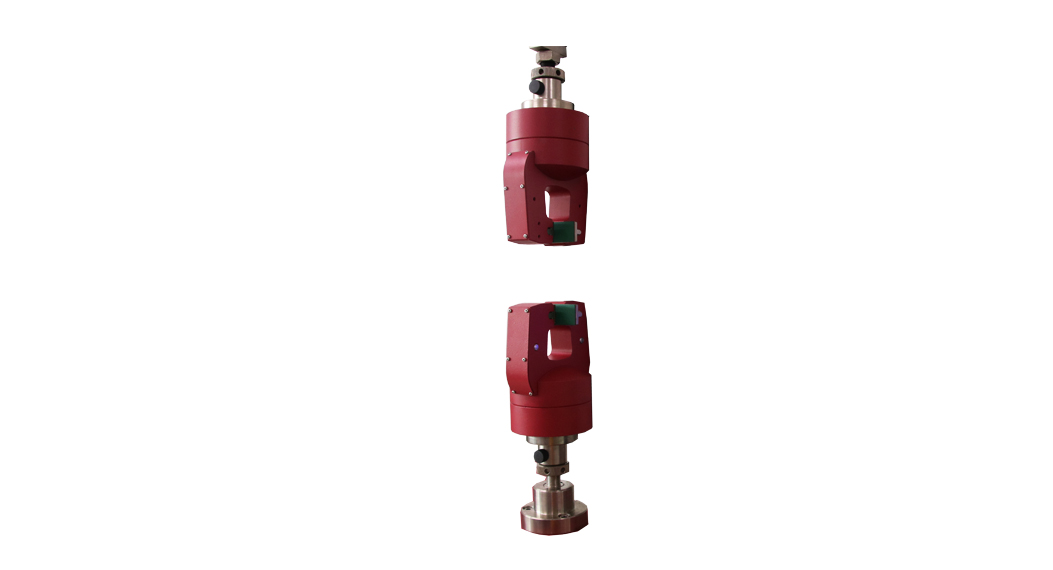Tel : +86-18850221490
Email : info@utextester.com

ASTM D5034 provides the test procedure for grab and modified grab methods to determine the breaking strength and elongation of most textile fabrics.
The grab test procedure is applicable to woven, nonwoven, and felted fabrics, while the modified grab test procedure is used primarily for woven fabrics. ASTM D5034 is not recommended for glass fabrics, or for knitted fabrics and other textile fabrics which have high stretch (more than 11 %).
Principle
Clamp the center part of the sample with a width of 100 mm in the clamp of the tensile strength tester, and apply tension until the sample is broken. The test results (breaking strength and breaking elongation) can be read directly from the tensile strength tester, and can also be obtained from a ruler, dial, data acquisition card, or computer software matched with the tester (also available from the load-extension curve or from the load-extension curve). Connect to a computer and read from the computer.
Materials Testing System
For ASTM D5034 testing, it is important to increase the test data rate to ensure that a large number of data points are captured. The data rate must be fast enough to capture the peak value that occurs when a single fiber in the structure fails. The fast data capture rate of the UT002A series allows accurate capture of data peaks and valleys at a frequency of up to 2000 times/sec.
U-TEX UT002A is recommended to use which occupies the collection frequency with 2000 times/sec. For most textile fabric testing according to ASTM D5034, single column frame with 2.5KN load cell is enough for regular tests.

Grips
Optional manual side action grips and pneumatic grips. Pneumatic grips with rubber coated jaw faces are easier for operation. The adjustable clamping pressure also allows the user to fine-tune the clamping pressure to avoid jaw breaks or slippage.

Tips
The fabric sample is particularly prone to slip during the test. U-TEX pneumatic side grips with rubber surfaces are ideal for gripping almost all types of fabric samples for this test, minimizing slippage while maintaining high throughput.
For ASTM D5034, crosshead displacement is usually used to report elongation. Whenever beam displacement data is used, compliance correction should also be used to remove system compliance from the data. For more details, please check the standard in details.